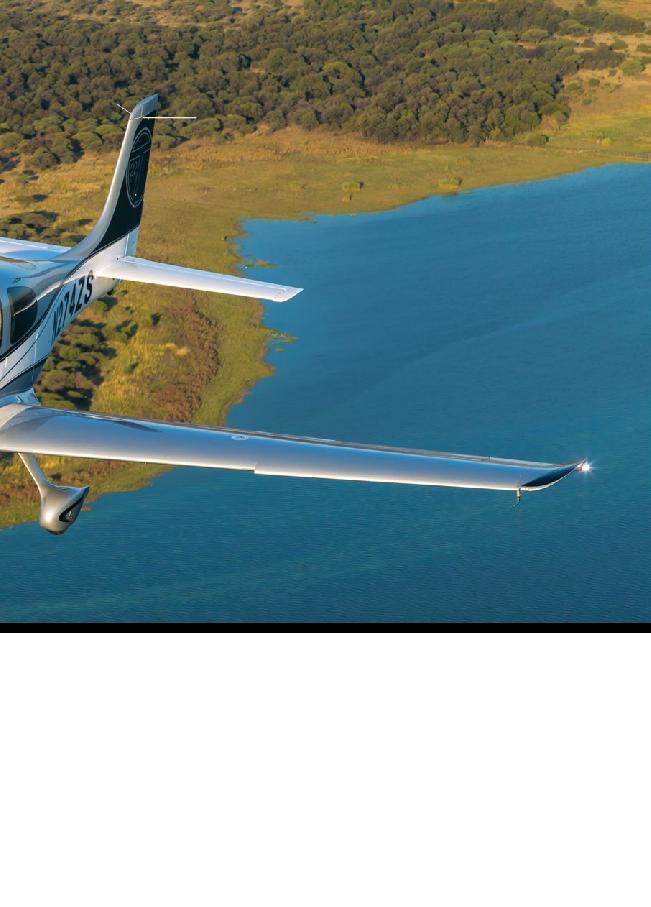
2013 SEPTEMBER Vol. 5 / No. 9 /
GA
43
The 315 bhp Continental is
housed beneath a very sleek cowling
with a Hartzell 3-bladed lightweight
composite propeller out the front.
The propellers curved blades have
sound ground clearance and add to
the sense of style generated by the
G5. The entire airframe and wings
are primarily constructed from
composite materials offering a very
smooth finish, only interrupted by
the occasional aerial. The CAPS unit
is invisible to the eye and a warning
decal on the aft fuselage provides
the only evidence of its existence.
Entry to the cockpit is via
overwing walkways, stepping down
through one of two gull-wing style
doors, although they are hinged at
the doors' leading edge. Once inside
the sense of style and quality of
finish is immediately apparent. From
iPod input jacks to the shining silver
air-conditioning outlets, every detail
is finished to the highest quality.
The seat is adjustable by a grab-
bar beneath the panel and a handle
under the front of the seat. Moving
forward also elevates the seat and
the forward view on offer is ideal
with all major controls and switches
within easy reach. I note that the leg
room behind me is generous as is the
headroom above me. On the ceiling is
the CAPS firing handle, whose safety
pin has now been stowed prominently
on the forward instrument panel.
Centrally located on the pedestal
is the fuel selector, boost pump,
throttle and mixture control. There
is no pitch lever and this turbo-
charged engine drives a consistent
2,500 rpm with power being set
as a percentage. It is a simple
arrangement and a far cry from the
early turbo-charged pistons with
jamming waste-gates and the ever-
present threat of over-boosting.
Ahead of the centre panel is
the FMS keypad and the autopilot
merging further forward into the
instrument panel dominated by two
massive Garmin EFIS screens. The
`Cirrus Perspective' offers a huge
range of options to the pilot from
Synthetic Vision Technology (SVT)
and infra-red displays seeking out the
heat of runway lights in low visibility
to the amazing `Highway in the Sky'
boxes as a means of flying a path and
a `LVL' button on the autopilot. The
LVL (Level) button is highlighted
by a blue border and in the event of
disorientation and an unusual attitude,
the pilot need only select the LVL
button to engage the autopilot and
level the aircraft in one simple step.
Even so, a panel of three standby
analogue instruments are at the ready
on the instrument panels lower edge.
Extending out from the lower
outboard edge of the instrument
panel is the side-stick for aircraft
control. The dual controls sit at
a comfortable height and allow
the use of an arm rest for support.
Between the throttle position and the
side-stick, the ergonomic engineers
have got it right in this aeroplane.
Starting the G5 could not be

